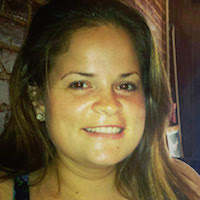Over the last two months, I began doing trauma work using a therapy called, prolonged exposure.
There are a few components to this treatment, including both imaginal and in vivo exposures, which gradually expose you to trauma memories, feelings, and situations in order to reduce PTSD symptoms.
One part of the treatment involves recording a retelling of the traumatic event while in session with my therapist; this is done in first person as though the trauma were happening in the present moment. For homework, I listen to the recording a few times during the week outside of session. Each time, I record my emotional intensity before and after listening to the recording. Over time, the emotions around the traumatic event decrease as I become acclimated to the traumatic event.
PTSD symptoms are maintained by avoiding feared emotions, situations, memories. The avoidance reinforces the belief that there is something to be feared. By facing these memories, new learning occurs. We see that we are safe even in situations that remind us of trauma. In this portion of prolonged exposure therapy, any new learning that has occurred is processed and integrated.
During this process, a number of surprising thoughts, questions, and revelations came into my conscious awareness.
Here are things that I had heard spoken by other trauma survivors but never recognized within myself until now:
1. I found myself questioning whether or not people will believe my lived experience of the event.
I felt that the onus was on me to prove that the traumatic event was, in fact, traumatic. Will people think I’m exaggerating about what happened? Will people question my memory and recall of the event? I yearned to hear the words, of course the trauma isn’t your fault. Yes, I believe you. You have nothing to justify.
2. Do I discuss the traumatic event even if it may create a rift in my social circle?
Will it force people to take sides? These concerns may be particularly pronounced for traumas that were perpetrated by a family member. Do you stay silent for the peace of the family?
3. In the same vein, a decision needs to be made as to whether or not to be in contact with the perpetrator.
This decision may involve people you potentially need to stay in contact with like close family members.
4. The perpetrator may never acknowledge what happened.
And, at the end of the day, that may mean that the sole validation that the event occured will come from myself.
5. Radical acceptance of the traumatic experience helps me to radically accept myself.
Without it, there are parts of myself that are being left cut off or unacknowledged.
6. Facing the traumatic events has helped me to become mindful of painful behaviors that are repeating themselves as a result of the original trauma.
This mindful gap can provide the space needed for different outcomes to take place in this moment.
As of today, the treatment has been effective in reducing my PTSD symptoms. I’m able to embrace more of my myself—even the parts that had once been deeply wounded.
As Brené Brown said, “Owning our story can be hard but not nearly as difficult as spending our lives running from it.”
By facing my trauma, I have stopped running.
~












Read 6 comments and reply